September 20th, 2010 · 5 Comments
I first noticed it one of our first walking tours. We were walking around Bloomsbury when we approached Bedford Square. It was a welcome patch of green and seemed reassuring and welcoming even from our first day in London, but on this day we actually tried to enter the small park. “Well it looks as if the Duke has decided to close the park today,” said Professor Qualls, his voice harboring a tone of disappointment. It was this moment that an idea dawned on me, public spaces in London aren’t truly “public,” they are mercifully given to the people by the aristocracy to brighten up their gloomy lives. For this reason, if the Duke of Bedford would like to have a personal picnic, or the Queen wants a day by the pond, they can close down any park they’d like for their own personal enjoyment.
This fact makes me a little perturbed. What is public space? That is one of the appealing things of Central Park in NYC, it is run by the publicly elected parks department officials. In that way the people decide who runs their parks. This is not the case in London.
The ownership of the “public” space is just another example of the feudal concepts of land ownership that still exist in England today. Just like the museums however, it seems to be the price one pays for perfectly manicured sports fields and classical European gardens that are open to the public. I am of course, talking about one of my favorite parks, Regent’s Park which I was able to return to a few times in pursuit of different things.
When it comes to parks in London however, the crown jewel (pun intended) is of course Hyde Park. It would take days of exploring to uncover all of the hidden landmarks and monuments.
So despite what you might think about the illusion of public space in a Monarchical space, these parks a a great place for a stroll on a sunny British day.
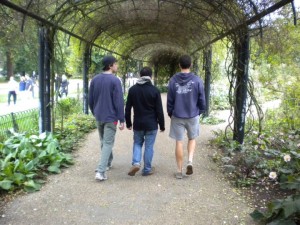
(personal photo)
Tags: 2010 MatthewG
September 19th, 2010 · No Comments
Hailing from a small New England town tucked away in the white mountains of New Hampshire, I’m quite familiar with “green space.” I am actually more unaccustomed to living anywhere even close to a big city. Nearest to home is Boston—a two hour and fifteen minute haul. Therefore, one significant change in living in London is the disappearance of the monstrous mountains, endless trees, and, of course, fresh, crisp air. However, this wondrous city never ceases to surprise me. The parks I have visited are, as many can agree, blessed sanctuaries. I unintentionally have separated the innumerable parks into two groups: the larger, well known ones and the smaller, more secluded ones. Each sort of park provides a different environment.
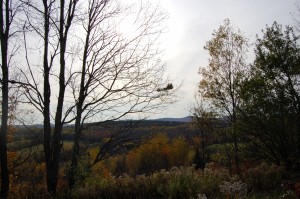
New England’s expansive green space (personal photo)
Of the “royal” parks (they’re labeled as such on London’s website) I have enjoyed Hyde Park and its nearby neighbor, Kensington Gardens; the Green Park, St. James’s Park, and the Reagent’s Park. It is at times entertaining to get lost in these massive parks. As a person wanders, he or she delves deeper into the green refuge and furthers him or herself from the city’s bustle and grime. I enjoyed exploring the incalculable monuments, memorials, and museums that materialize in these sprawling parks. These sanctuaries are not just for people to escape the city chaos; they serve as a safe place to preserve the surrounding area’s detailed history. I researched Hyde Park extensively and the pride the Londoners hold for the history of the park and the area itself is immediately evident. Speaker’s Corner, Rotten Row, Serpentine, the Wellington Museum—they all are housed within Hyde Park to be preserved and honored. For one, Hyde Park Corner Tube Station boasts tunnels decorated with elaborate murals illustrating the area’s history. How that for an introduction?

Hyde Park
The smaller parks have their own benefits. Scattered throughout the city and hidden in unexpected areas of London, these parks also present its community with an opportunity to take a break from the stresses of life. Although, they seem to enact stricter regulations, the parks offer a one with a place for relaxation, tranquility, entertainment, and community. Not to say these features do not apply to the larger parks, but these small parks seem much more intimate and more closely connected to the residents of the area. Also, these parks oftentimes possess a number of historical monuments but to a lesser degree in comparison to the royal parks. Even so, all of these parks in London, regardless of their size, give people a place to take a break from city life or just life in general. And to me, I particularly like that each one prides itself on its distinctive, detailed history.

Bedford Square, the park just down Gower Street
Tags: 2010 Mary
September 15th, 2009 · 1 Comment
Parks is a topic I know all too well, considering that was what my group project was about. I thought that this blog post should be the easiest because of that fact, but actually it has been quite difficult trying to figure out what aspect of parks I should talk about. Parks, as I learned through research, are more than just aescetically pleasing. They can serve a purpose of immortalizing people and places or even as a place of national pride. What I was most interested in when I was researching parks though was the use of parks as a public space, in the sense of the public being able to use it as a place to proclaim their beliefs, where they could be ridiculed, praised or even arrested.
In Hyde Park, the park I have studied more in length, seemed to have the most to do with free speech. The first example of this was with Edmund Beales and his Reform League in 1866. They protested in Hyde Park on the 23 of July, 1866 over male suffrage and the representation of the working and middle classes in England on the ballot. Fighting broke out between the Reform League and the police, and there was much consideration on banning these demonstrations. The Prime Minister at the time though soon allowed such demonstrations to continue “unchallenged…since 1872” when Speaker’s Corner was sort of informally born.

Speaker’s Corner is found on one of the far corners of the park, and today is relatively unmarked so that walking by you wouldn’t even notice it was a place of importance. Since 1872 people have basically had the “right” to speak on whatever topic they so desired on any given Sunday, so long as no profanity or violence be used. Many famous people have come here to speak such as Karl Marx, Vladimir Lenon, and George Orwell to name a few. There is really no law that states that this place is the only place of free speech here in London, but police will allow those who wish to speak their mind (granted they follow the very basic rules as mentioned previously) to do so.

One of the most famous events of free speech in the park was Women’s Sunday on the 21 of June, 1908. The Women’s Social and Political Union decided to hold a “meeting” at Hyde Park featuring suffragettes from all parts of the United Kingdom. They all rallied to obviously prove the point that women should be allowed the right to vote. It attracted a crowd of at least 300,000 people and it was one of the largest single demonstration of that time. Women were advised to “wear the colours” which were white for purity, green for hope, and purple for dignity. Although the demonstration was successful in proving its point, it ended in many women’s arrest.
It is strange to think of the limits on free speech, coming from a country where it is allowed (within reason). The importance of these green spaces to the history and heritage of London and England as a whole can be seen through such events of free speech and demonstrations. These places hold a sense of national pride to England’s history, and I am glad that people are still allowed to get up on their “soapboxes” today and speak on whatever they so believe in. That is the beauty and power of history.
Tags: Alli
September 14th, 2009 · No Comments
-
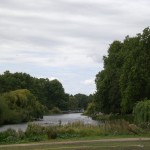
-
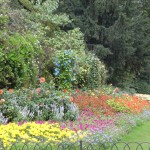
There’s nothing I love more than to be outside on a beautiful day. Growing up on the James River has allowed me to venture down for a “nature walk” whenever I’m home. I’ve been spoiled in that sense. So coming to London, a city full of parks seemed like a happy medium to me. I could participate in the big city scene and still enjoy my beloved green spaces. However, some of the parks have been ‘disappointing’ in that fact that they are so unnatural. What I mean by that is the exact planning and placement of walkways, restaurants, water features, ect. Sure, it’s a great place to exercise and push a pram along a scenic pathway (complete with perfectly manicured lawns!), but it’s not what I am looking for in my ideal park. I can appreciate the effort and money the city spends on these places. It’s a great place to take a break from the hustle and bustle of London and sit on a wooden bench to read your paper. But I find it incredibly strange that people are almost discouraged from sitting on the grass. Instead, deckchairs are available for hire from April to September. Another thing that really bothers me is the rule against ball games. The parks are great place for a pick-up 5 aside football (soccer) match… oh wait, you can’t play ball in most of these places. Why? I’m the kind of person who goes to open green spaces to relax. When I go to a park I want to be able to run free, lounge on the grass, play games, read and generally cut loose. I feel like I can’t do that here. I’m directing most of this rant towards St. James’s Park and Regent’s Park. Great flowers, too many rules.
I participated in the “Parks” tour group last Thursday and I absolutely loved Hyde Park. This 350-acre space in the heart of London still has most of the aspects I just discussed, but it has another side. In parts of this former royal hunting ground the grass uncut and long, the people walk off the path and you can even go swimming in the Lido. Maybe it’s just the sheer size of the grounds, but this park just “feels right” to me; this is how a park should be. I also noticed the large variety of wildlife at Hyde Park. Besides the normal flocks of pigeons, there were also surprising amounts of waterfowl living in the Long Water. The variety of activities was also impressive. One can do anything form tennis to horseback riding in this park! I hope I can go back for a little bit tomorrow after lunch and explore a bit more. Although I have some problems with a few of the Royal Parks, I cannot deny that they are a wonderful addition to the city. I am looking forward to the open air of Norwich… at least I can play some football there.
Tags: Grace
September 14th, 2009 · No Comments
Although I have blogged, to some extent, about most academic things I have done in London, I feel that I have a better impression of most things now than I did at the beginning of the stay. Along this vein, I feel the need to revise, or just plain state, my opinions on the “Big Five” topics – parks, churches, museums, theatres, and pubs.
I have now been to five of the Royal Parks in London. Green Park, Kensington Gardens, Hyde Park, Regent’s Park, and St James’ Park are all very similar and yet very different in their own ways. I found Green Park, situated very close to Buckingham Palace, to have the most unfriendly atmosphere of the five. There is very little to Green Park. There are trees, benches, grass, the ever-popular lawn chairs for rent, and beautiful ornate gates facing Buckingham Palace. I think the reason I found the park so cold is that it was, well, too green. There were no flowers or water features (except for one fountain commemorating the Canadians), just trees, grass, and benches.
This is vastly different from the other four parks I visited. St James’ Park, Hyde Park, Regent’s Park, and Kensington Gardens all were beautifully landscaped with brightly colored flowers, clean fountains, scultpures, and natural or constructed water features. In Hyde Park, Regent’s Park, and Kensington Gardens it was easy to forget that you were in the middle of a pollution-filled city. As I am not much of a city person, it was extremely refreshing for me to not be able to hear or see traffic for a while. With Green Park and St James’ Park, I couldn’t shake that feeling. However, I am a firm believer that parks, whether or not they are within city limits, always make people feel healthier. For this reason and the sheer beauty that the parks portrayed in their different ways, I understand why I did not only see tourists, but the people of London as well.
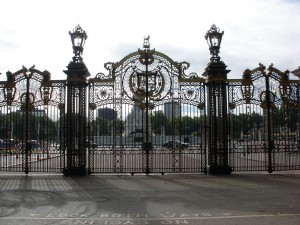
Gates towards Buckingham Palace from Green Park
Churches and other places of worship are an integral part of societies throughout the world. Throughout our time in London, we have been fortunate enough to visit Westminster Abbey, St Paul’s Cathedral, a Sikh gurdwara, and a Hindu temple. Of these four I enjoyed St Paul’s Cathedral the most from a purely historical standpoint and the Hindu temple most from a cultural perspective. St. Paul’s is one of the most recognizable and interesting buildings in London. It not only houses some of the most important military remains in the country (the Duke of Wellington and Admiral Nelson), but it was one of the most iconic images of WWII Britain. I also found it to be less like a museum where I felt like hop-scotching around graves in the floor (Westminster Abbey) and much more like a place of worship.
I enjoyed the Hindu temple for very different reasons. Although there was a definite sense of it being a tourist attraction, with the gift shop in the lobby and the interpretive centre with tiny models of Hindu gods, the temple was still very obviously, well, a temple. Before going there, I had no idea what Hinduism was like. I knew that there are multiple gods and that one is an elephant, but I didn’t know about their dedication to peace and volunteer work. What really struck me about it was that the intricate carving and craftsmanship of the facility was all done by volunteers. I think that this cultural experience was only heightened by being able to observe a service in the sanctuary that was so unlike my own Roman Catholic faith.
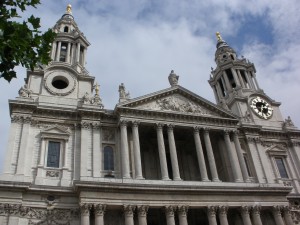
St Paul's Cathedral - a symbol and a place of worship
I had very mixed experiences with museums in London. Some, like the Victoria and Albert, I just didn’t seem to understand in the amount of time I spent there. However, I think that if I went back and dedicated a day to the facility, I would appreciate how the seemingly-random exhibits link together much better. (I did enjoy the items on display in the V&A, I just had an issue with the layout of the museum.) Other museums, like the Museum of London and the Docklands Museum, were put together in a very fluid and informative manner that I enjoyed greatly. My two biggest museum issues were with the British Museum and Sir John Soane’s Home/Museum. Grace and I wrote extensively on our thoughts on the British Museum, so instead of repeating everything, I’ll just give a brief summary: why are all of these amazing artifacts that have no connection to Britain in the British Museum?
The Sir John Soane Museum is a completely different story. I appreciated that the museum was free and displayed an extremely eclectic collection, but please never make me go back there ever again! It was the single most claustrophobic place I have ever been in my entire life with possibly one exception. Call it a personal thing, I do not like it when random pieces of monuments are mounted on the ceiling directly above my head. I am also not a big fan of walking into a room in a house and having literally hundreds of sculpture eyes staring at me from every surface around me. I disliked it so much that I could not even finish going through it, and anyone who has been in a museum with me will know that I read and see as much as I possibly can. I don’t understand why that creepy building perfectly-suited to be a haunted house at Halloween is called a museum. (Please if you can attempt to explain it to me, go right ahead!)
Theatre is a subject I have talked about in a couple of different posts (Observations on Accessibility and Blood Painters and Pitmen Brothers), however, I have not discussed theatre in general. I was lucky enough to see Troilus and Cressida, All’s Well That Ends Well, Arcadia, The Pitmen Painters, and Blood Brothers. Each of these theatre experiences were extremely different, but all valuable in their own ways. Troilus and Cressidawas shown in the Globe Theatre and we had groundling tickets that forced us to stand for the 3 hour performance. The actual standing wasn’t nearly as bad as I thought it would be, but the best thing about the show was being quite literally three-to-four feet away from the actors on stage. (Actually, it was slightly amusing when Hector died and was lying 3 feet away in our line of sight for the last 20 minutes of the play!) The staging of this Shakespearian play was vastly different to All’s Well That Ends Well, which was put on in the National Theatre. In the Globe, the sets are quite minimal because they have to perform four or five different shows on the same stage in the space of a few days. The set for All’s Well That Ends Well was much more elaborate and specialized for the show. Rather than the reliance on the actors and the costumes that the Globe used to tell you where the play was occurring, All’s Well That Ends Well used a dark set with elaborate staircases to add to the mood of characters and the dialogue.
Much like with Troilus and Cressida, the set for Arcadia was also pretty simple. Although the play took place in two different years, it was set in exactly the same room with almost all of the same props. This was a very effective way to stage the show and allowed for the writer, Tom Stoppard, to do some very interesting things with the characters from both time periods, like when he had them all in the room at the same time, oblivious to each other. I particularly enjoyed the way that this play was set and how basic it was. It was vastly different from the more complicated sets of The Pitmen Painters, which included projection screens, and Blood Brothers, which had lots of windows for the Devil/God character to peer creepily out of.
This final subject I have not blogged about at all. Pubs are an integral part of British culture. That said, pubs are also an integral part of Irish culture, so I experienced pub life when I lived in Ireland. British pubs and Irish pubs have a lot of similarities and differences. In both places, you must push viciously up to the bar in order to get your food and drink, you have to be 18 to have alcohol, smoking must be done outside, and there are usually way too many people in the pub for you to feel comfortable. Oh, and you always pay way more than you think you should for your drink. I’ve been to a couple of pubs in London and have found that they are all fairly similar. The bartenders are nice, but kind of frantic; the food is good, and usually relatively cheap; and the music is God-awful 1980s or techno playing at volumes that are way too loud. The first two are cohesive with pretty well every Irish pub I’ve ever been in, the third is not. Irish pubs play good music… or at least much better music than I’ve heard here! There are a lot of pubs that have a band playing traditional Irish music in front of you in the pub for pints and there are also a lot that play modern music at volumes that make my ears want to cry – but at least the music isn’t a Cher and Meatloaf duet accompanied with the weirdest music video I have ever seen in my entire life. (This particular musical masterpiece was played in The Court the other day. I never would have thought of that particular combination, but oooooookkkkkkkkkk.) Truth be told, I just want to find a comfortable pub with some good music and that will make me just as happy as George Orwell’s fictitious Moon Under Water.
Tags: Churches and Cathedrals · Kelley · Museums · Pubs · Theatre
September 13th, 2009 · No Comments
“The great surprise of the Moon Under Water is its garden. You go through a narrow passage leading out of the saloon, and find yourself in a fairly large garden with plane trees, under which there are little green tables with iron chairs round them. Up at one end of the garden there are swings and a chute for the children.”- Orwell
Green Space and Pub Culture? How my brain thought I could make this comparison is beyond my knowledge but, just for a moment, think about it…..
London is a city of continual urbanization. Despite its growing population and continual reconstruction, London has been able to preserve almost 5,000 acres of Royal Park. These parks are a significant characteristic of London, and quite an amazing gift from the Royal family. They are routinely kept, and always monitored; taken care of as if they were children.
Now, I’m from Arizona. I am from the desert. The desert; the hot, sweaty, dry, brown, sandy desert. Green space is something you don’t often come across, and when you do, you must know, that it takes approximately 1,000 gallons of water to make it look like that.
Wandering through the parks of London has shown me a completely new world. I love the way you can immediately escape the rush of a city, to find complete serenity. However, regardless of their beauty, why do they take such great care of these areas?
Why spend the money, time, attention to maintain the area?
When thinking about the social scene in London, I am automatically reminded of pubs. It seems as though pub culture has become a staple activity for those who visit London as well as those living here now. Since going on the Pub Tour, I have come to understand that Pubs are multi-purpose structures first known as town Inn’s and now used for happy hour and parties.
I have never had a fake ID and I don’t drink. That said, till now I had never even entered a bar.
I have seen a wide variety of pubs since I have been in London. Some cater to business clientele, others to locals, and finally those that focus on college and teenage groups. Now that I know the history of pubs, its interesting to notice those with traditional structure and others that are completely modern. Each pub is different, but does this mean they remain a symbol of British culture?
Why renovate, preserve, and promote buildings that have transformed into an incorrect representation of London pub life?
These two pieces of London are comparable because they are both obvious traits of London. Not only are they well known to the tourist population, but they are continually appreciated by those that live in the community. The people of London are preserving both their parks and pubs simply because they are beautiful pieces of culture. Both pubs and parks act as a form of relaxation. Like in George Orwell’s Moon Under Water, the perfect pub would be alongside a garden; a place of peace.
London will always watch over pubs and parks, not only for a form of relaxation, but to hold on to an always deteriorating sense of nationalism. Britain will continue to evolve, but by saving certain parts of the city, it will remain unique and deeply historical.
Tags: Patsy
There are a total of eight Royal Parks within all greater London: St. James’s Park; The Green Park; Hyde Park; Kensington Gardens; Richmond Park; Greenwich Park; The Regent’s Park and Bushy Park. Thus far, I have visited three of these: St. James’s Park; Greenwich Park and The Regent’s Park. Each park was very different, yet shared a similar history.
St. James’s Park, originally created by King Henry VIII as a personal deer park for hunting, is located in Westminster. The park has been remodeled several times, including once for King Charles II in the 1600’s and again in the first half of the 1800’s by John Nash. The closest tube stops include Piccadilly Circus, Charing Cross and, of course, St. James’s Park.
This park is absolutely massive. You could easily spend an entire day here. Perhaps the most interesting feature of this park is its wildlife. There were waterfowl of all kinds paddling and preening in around the long lake that stretches through the park and placards along the way that discussed each species. The asphalt walkways circling the lake contain markers that indicate that the Princess Diana Memorial Walk trails through the park. With all the flora and fauna found inside St. James’s Park, it only seems appropriate to commemorate one of Great Britain’s most beloved members of the royal family here, amidst such beauty.
St. James’s Park is a popular spot for tourists and locals alike. There were many families, especially, snapping pictures of the scenery, but also native Brits jogging or enjoying lunch or a book in the park. What I did find interesting was that there were very few non-whites in the park. I remember seeing one tourist family of what appeared to be an Indian descent inside the park, posing for family snapshots by a knotty tree, and a two black women with strollers and little, skipping girls around the age of five, who walked along the sidewalk on the outskirts of the park, but never entered it.
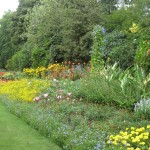


Greenwich Park is equally interesting. We walked through this park on our way to The Royal Observatory, which is located almost in the center of the park. The Observatory was commissioned by King Charles II (see hyperlink above) in 1675 and was designed by Christopher Wren, the architect who was responsible for countless famous buildings around London including St. Paul’s Cathedral and others circa the Great Fire of 1666. The park is inaccessible via the tube, but many buses such as the 188 and 53 run through Greenwich at frequent intervals.
This park, which is divided by the Prime Meridian features much more open space than either St. James’s or The Regent’s Park. There are large expanses of lawns – slightly browning in areas – with trees dotting the landscape throughout, but no fences, hedges, walls or other structures that create intimate spaces within the park. As we walked through the park I noticed many families and couples strolling through the park, and several joggers. There was a friendly yet rather skinny dog sniffing around the sneakers of several students. He carried a ball in his mouth and seemed to plead with his icy blue eyes for a playmate. He wandered around without direction and I wondered if he was blind, or homeless, and watched the ribs shift under his taut skin.
The abandoned dog, the slightly sunburned grass and the lack of flora cast a feeling of melancholy upon me as I walked through the park. I didn’t feel joy or peace in Greenwich Park as I did in St. James’s or The Regent’s Parks. Even the view of the city from the top of the hill upon which the observatory is situated depressed me. It is a view full of skyscrapers, power plants, power lines, smoke stacks no longer in use. When I am in the city for too long, I crave green space, but in Greenwich Park, I found myself preferring the city.
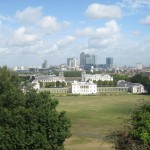
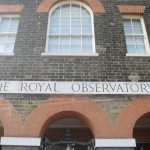
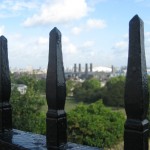
The Regent’s Park, located between Paddington and Camden Town, is accessible via several tube stops, including; Marylebone, Great Portland Street and, of course, Regent’s Park. The park was originally another of King Henry VIII’s deer gardens (see hyperlink above) and features the Queen Mary’s Garden, an area of the park blooming with over nine thousand begonias.
The Regent’s Park is one of the most stunning places, if not the most, I have been lucky enough to visit in my life. The walkways reach out through rows of shaped cylinders of shrubbery and tall hedges line the walkway, creating walls of green that flank beds of bright flora. Fountains pour out clear water that glints in the sun, cascading like icicles ripped from rooftops in the winter. There are areas reserved strictly for children, areas with cafes, an outdoor amphitheatre and a community sports and recreation centre. The overall feeling that I had being in the park was one of peace and serenity. Car horns, sirens, the pounding of joggers’ feet and the wails of children with scraped knees or simply a poor temperament could not be heard in the near silence of the park. For one who is quick to grow weary of the London hustle-bustle, The Regent’s Park serves as the quintessential getaway.
All of the Royal Parks I have visited thus far each have their own distinguishing characteristics, and a unique essence. But don’t take it from me. Hope on the tube and go find yourself some green.
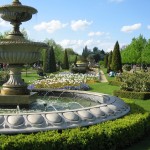
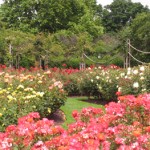
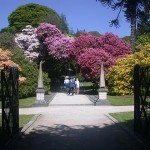
Tags: Anya



















